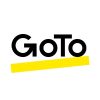Our content is funded in part by commercial partnerships, at no extra cost to you and without impact to our editorial impartiality. Click to Learn More
Our research shows that Vonage is better than Ooma for most businesses, as it offers more features, more integrations, better security, and is the more scalable software – all of which make it better value for money. In fact, the only major category in which Ooma came out on top when we recently tested a range of cheap VoIP providers was customer support, as it provides 24/7 live chat and phone support.
Read on to see exactly what you get with each of these two best-in-the-industry providers, and to find out whether Ooma or Vonage will suit your business best.
Ooma vs Vonage: VoIP Comparison
Vonage is a better VoIP provider than Ooma, due to its stronger value offering, enhanced in-house communication and training features, and broader selection of integrations. However, there’s much more to this comparison of two major VoIP players and when we tested them, we found a high level of service offered by both. That said, they do differ in some major ways.
Ooma is great for customer experience, providing excellent support and getting high marks in our customer score category, whereas Vonage has better training and onboarding features, which makes it a good choice for retail and customer service teams. In this guide, we cover the following criteria to compare Vonage and Ooma:
Before diving into the individual factors, we thought it would be beneficial to give a quick comparison overview between the two suppliers. Check out the table below to compare top-level features and pricing:
| Price from The typical lowest starting price. The lowest price available for your business will depend on your needs. | Best For | Core Benefit | Free Trial | Integrations | ||
|---|---|---|---|---|---|---|
| RECOMMENDED | ||||||
| Ooma | Vonage | |||||
| Overall customer experience | Training features | |||||
| No contracts, keep your number, and work from anywhere. | Staff improve on the job | |||||
| 30 days | 14 days | |||||
| 10 | 20 |
Ooma vs Vonage: Pricing and Value
Overall, we think Vonage is a better deal for businesses when it comes to price, although it does depend on your unique needs. Vonage offers a better range of features than Ooma for the amount you pay, so unless you have limited needs, you’ll get more for your money by choosing Vonage. In our latest testing, we awarded Vonage a 3.8/5 for pricing, versus Ooma’s 3.5/5 score.
When it comes to cost per user, Vonage discounts plan prices per user, the more users you have, while Ooma charges a flat rate per user on its basic tier, regardless of how many employees you have. This makes Vonage better value the more staff you have that need to use the software. When it comes to free trials, Ooma is a little more generous, with a 30-day free trial period vs Vonage’s 14-day free trial.
Ooma pricing
| Price | Team messaging | Document sharing | Video conferencing | 24/7 support | Call recording | Call monitoring | Analytics | ||
|---|---|---|---|---|---|---|---|---|---|
| Ooma Office | Ooma Office Pro | Ooma Office Pro Plus | |||||||
| | | | |||||||
| | | | |||||||
| | | | |||||||
| | | | |||||||
| | | | |||||||
| | | | |||||||
| | | |
Ooma offers two different types of pricing plans, Office and Enterprise. The Office plans is a bit more basic, offering just VoIP features that can help you keep your team in touch. The Enterprise plans, on the other hand, offer more management and collaboration tools, but costs a bit extra in the long run.
The most affordable Ooma Office plan starting at $19.95 per user per month. There are no annual contracts, and you can cancel at any time without penalty. Its flexibility and price range makes it best suited to smaller businesses over larger ones, and the features and integrations offered reflect the lower expectations smaller businesses might have.
| Price | Team messaging | Document sharing | Video conferencing | 24/7 support | Call recording | Call monitoring | Analytics | ||
|---|---|---|---|---|---|---|---|---|---|
| Ooma Enterprise Standard | Ooma Enterprise Enhanced | Ooma Enterprise Call Center | |||||||
| | | | |||||||
| | | | |||||||
| | | | |||||||
| | | | |||||||
| | | | |||||||
| | | | |||||||
| | | |
The Ooma Enterprise plans are aimed at larger businesses that are perhaps interested in a full-on call center, with prices ranging from $19.99 per user per month, $27.99 per user per month, and $49.99 per user per month.
Read our full Ooma vs MagicJack comparison to see how the provider’s value compares to another industry titan.
Vonage pricing
| Price | Users | Unlimited calls in US | Video conferencing | 24/7 support | Call recording | Email integration | CRM integration | ||
|---|---|---|---|---|---|---|---|---|---|
| Mobile | Premium | Advanced | |||||||
| Unlimited | Unlimited | Unlimited | |||||||
| | | | |||||||
| | | | |||||||
| | | | |||||||
| | | | |||||||
| | | | |||||||
| | | |
Vonage for Business comes in three different pricing plans: Mobile, Premium, and Advanced. The Mobile plan will cost you $19.99 per month per line, the Premium plan costs $29.99 per month per line, and the Advanced plan costs $39.99 per month per line.
Even better, as of April 2024, Vonage is offering a 30% discount on all plans if you opt for an annual contract instead of monthly subscription. This means that you can get the Mobile plan for only $13.99 per month, the Premium plan for only $20.99 per month, and the Advanced plan for only $27.99 per month.
Ooma for Business
In our research, we found that Ooma is a middle-of-the-pack phone system. It provides a good catalog of features, moderate scalability, and excellent customer support options for its users. Its pricing isn’t bad by any means, and it offers a 30-day free trial, too. However, compared to Vonage, and other VoIP providers we’ve reviewed, it doesn’t shine. Ooma lacks enough external connections to be considered one of our top options and received the lowest possible score when it comes to security, a vital necessity in 2024.
What's new for Ooma?
In December 2023, Ooma announced that its phone service would now integrate with Clio, a popular legal practice management software. This is an important integration, as other competitors like Vonage, Zoom Phone, RingCentral, and many other VoIP providers already offer the integration.
The security ding is a bad one, but customers still seem to enjoy using Ooma. It received impressive marks in our customer score category, which weighs ease of use and app reviews. Simply put, if you can overlook poor VoIP security (though you really shouldn’t) and limited external connections, Ooma could be the right move for your business.

Pros
- Free number transfer, so canceling your existing service is super easy
- Multi-level virtual receptionist, great for businesses fielding lots of incoming calls
- Easy DIY installation, so you can getting going really quickly
- 24/7 support, which is nice to have in the back pocket
Cons
- Pricier high-tier plans without the features to justify the cost
- Scores poorly for security, so there are better options for businesses handling sensitive data
- Few third-party integrations, which will make it harder to slot into your business infrastructure
- Starts from $19.95/user/month

- Pro plan: $24.99/user/month

- Pro Plus plan: $29.95/user/month

- Enterprise-level plans available starting from $19.99/user/month

Vonage for Business
If you’ve been looking into a VoIP system for your business, you’ve likely come across Vonage, as it’s one of the more recognizable names in the industry and for good reason. The provider scores respectably across most categories in our research, landing it in the top three of providers on the market, compared to Ooma’s 5th place ranking.
What's new for Vonage?
In March 2024, Vonage said it would begin offering generative AI for Vonage Conversational Commerce, allowing users to “create real-time and personalized connections with customers across platforms, delivering more meaningful customer data and streamlining operations through automation.”
Perhaps most impressive about Vonage is the size of its feature catalog and the amount of scalability you’ll find with the system, offering notably more than the majority of providers we researched, including Ooma. And while Vonage security isn’t stellar, it’s absolutely better than Ooma, which is why we give the edge of Vonage almost across the board.

Pros
- Great central hub for collaborating, with team messaging on all plans
- Great training and management features on, perfect for sales and customer service teams
- Lots of big-name integrations means minimal changes for your team
Cons
- No multi-factor authentication, which is bad for end-point security
- Analytics features are quite primitive, making it difficult to get actionable insights
- Lots of features include additional fees, so it's hard to get a good gauge of your final price
- Plans from $24/user/month

- Five different pricing plans available

- 87 plan: $140/user/month

Ooma vs Vonage: Business Features
When it comes to features, it’s Vonage that takes the crown. The tiered offerings mean that the company can provide more advanced features, such as CRM integration, for those customers willing to pay a little extra.
While Ooma still offers a great suite of features in its own right, it can’t compete with Vonage on offerings like video conferencing and online meetings. However, if you’re considering Vonage, it’s worth noting that some of these, such as call recording, do incur an extra cost.
Winner: Vonage
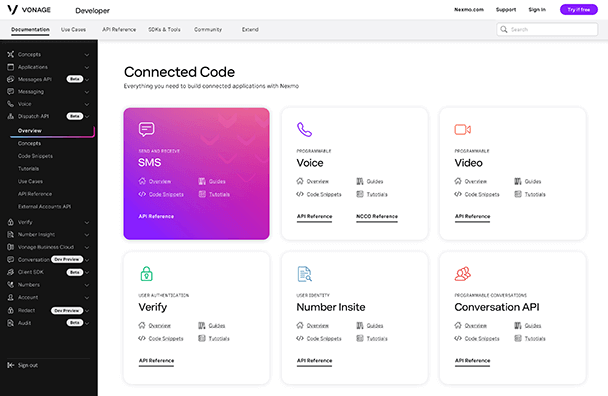
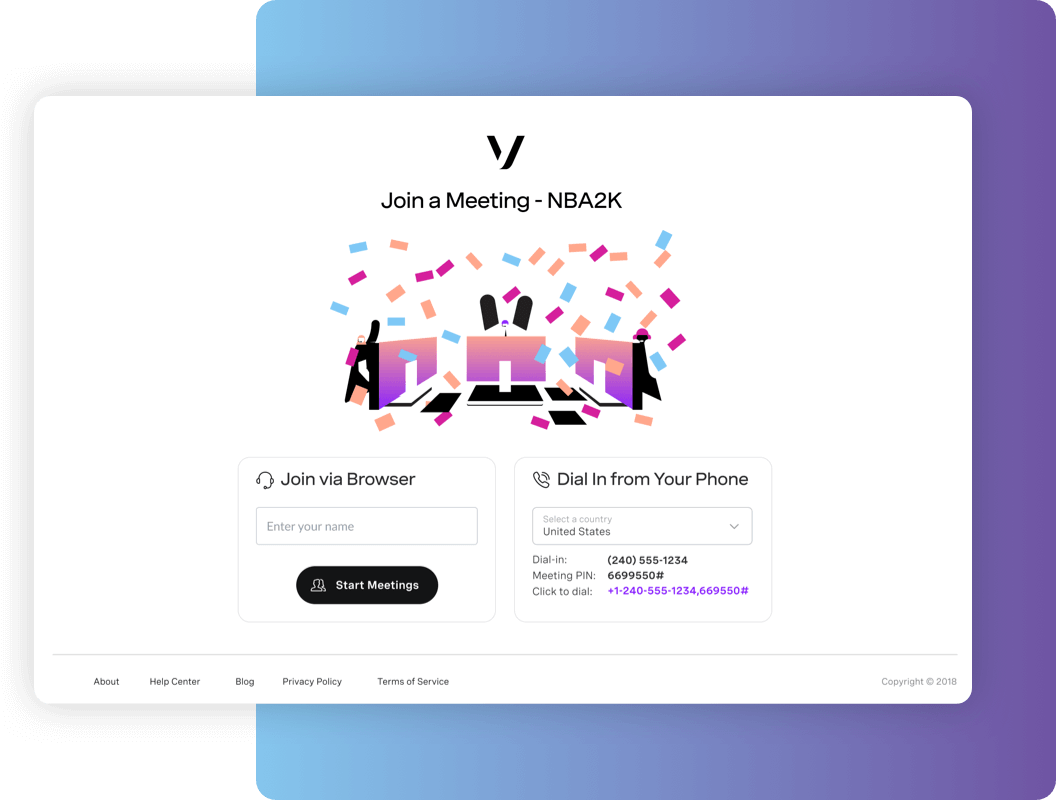
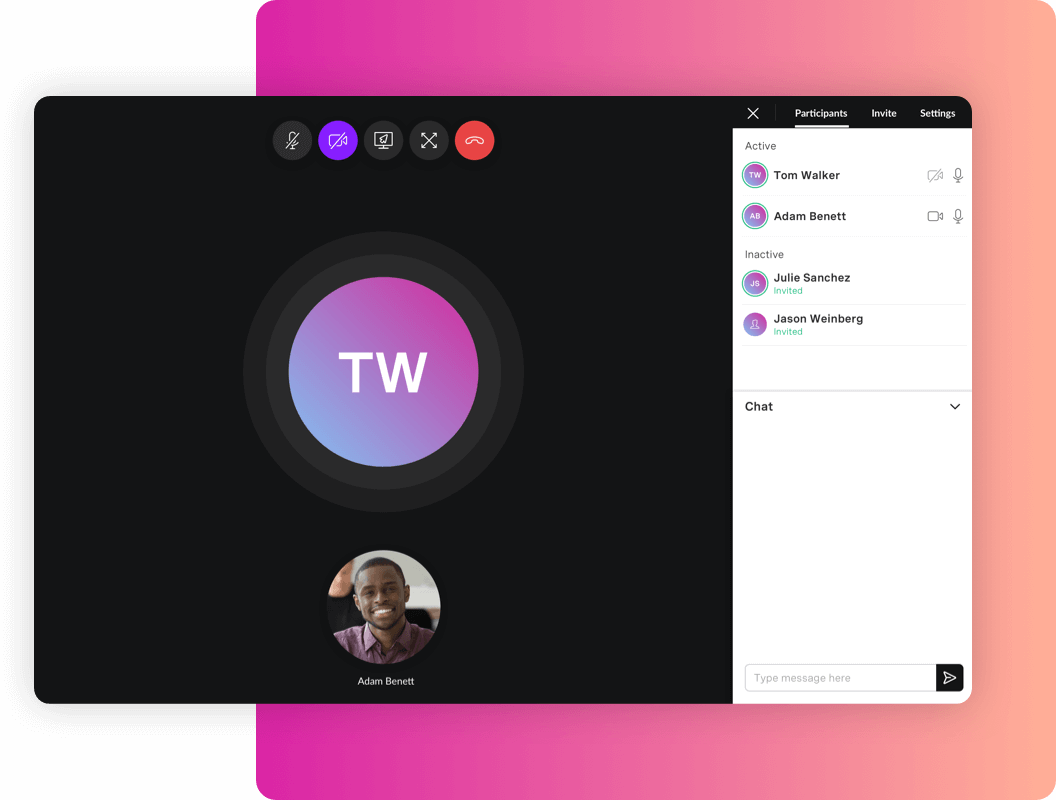



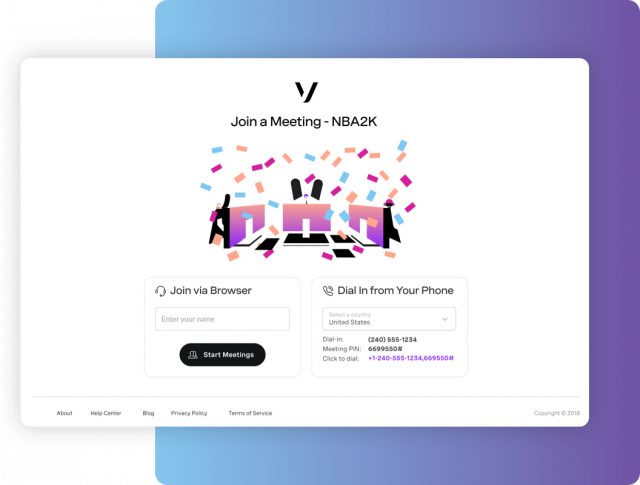
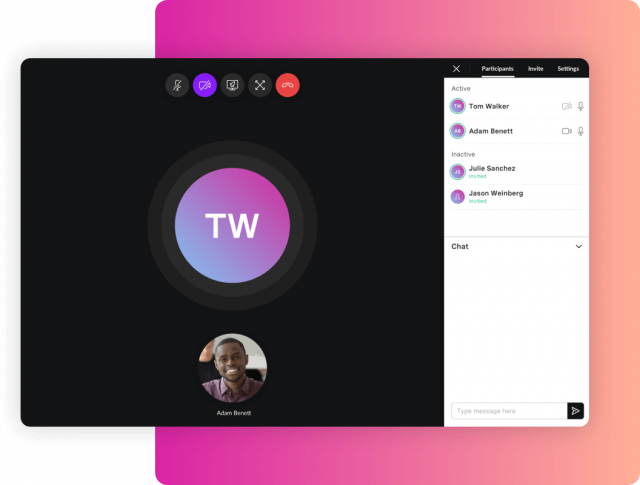
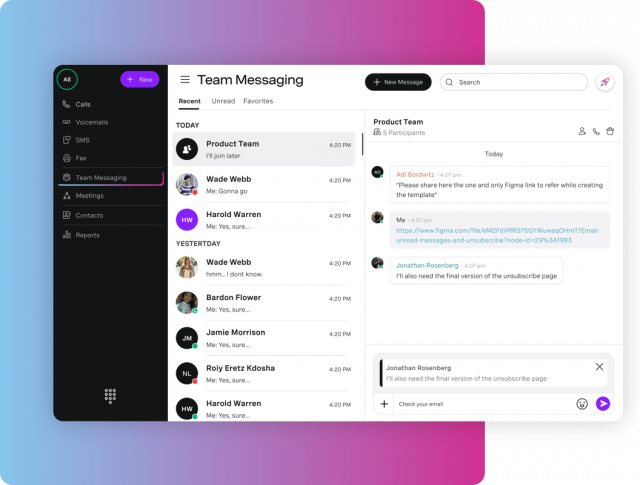

The Vonage business feature offering is robust and expansive.
Images: Vonage
Ooma vs Vonage: Customer Support
Both Ooma and Vonage offer plenty of support when it comes to setting up your system and providing on-the-spot help should you need it, with a variety of ways to get in touch including email, telephone or live chat.
However, when comparing the availability and number of channels between Ooma and Vonage, a winner is clear. Ooma is better than Vonage when it comes to customer support. While one of its few victories, Ooma really does shine here, offering 24/7 live chat and phone support to users across its plans. Conversely, Vonage only provides live chat for UK users and provides no 24/7 support for anyone.
Additionally, our customer score research — which weighed app reviews across sites like G2, Capterra, Trustpilot, and TrustRadius — found that Ooma also comes out on top against Vonage. This shows that while our research shows that Vonage is better than Ooma, customers aren’t necessarily inclined to agree.
Winner: Ooma
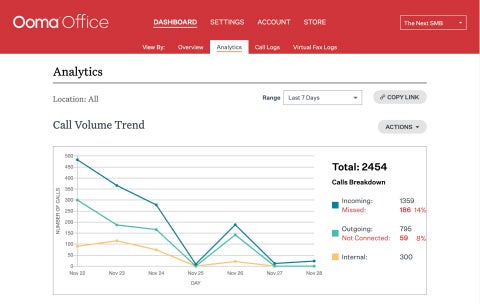

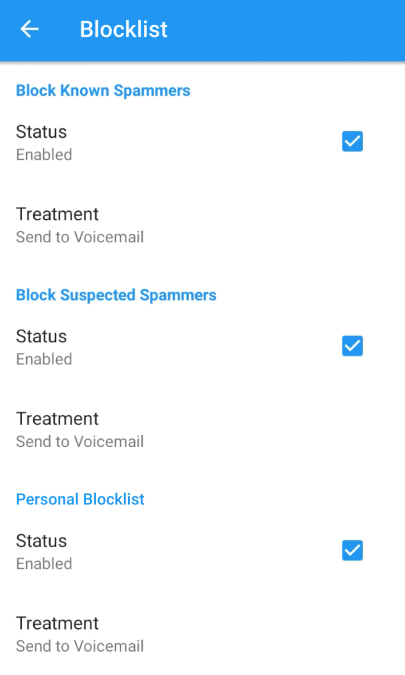
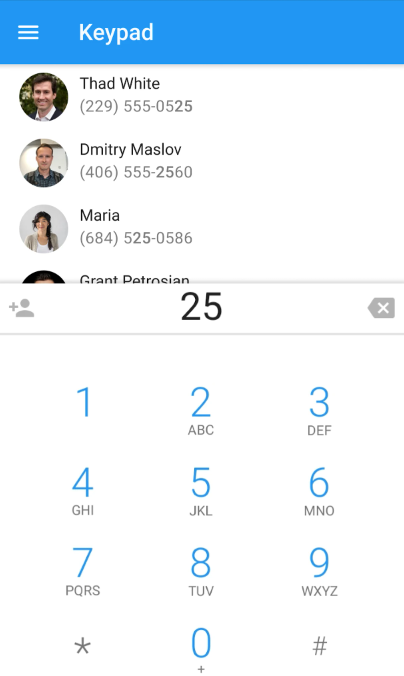


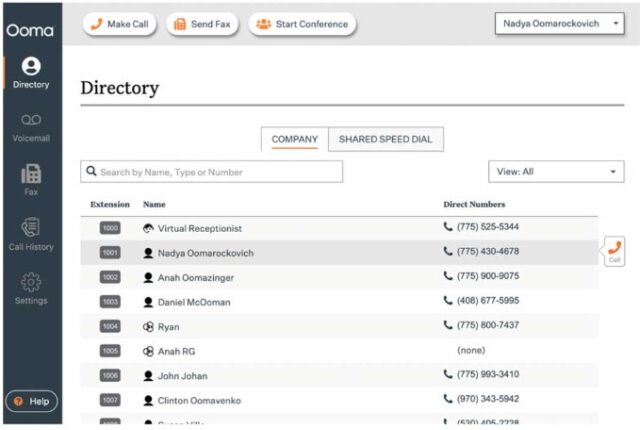
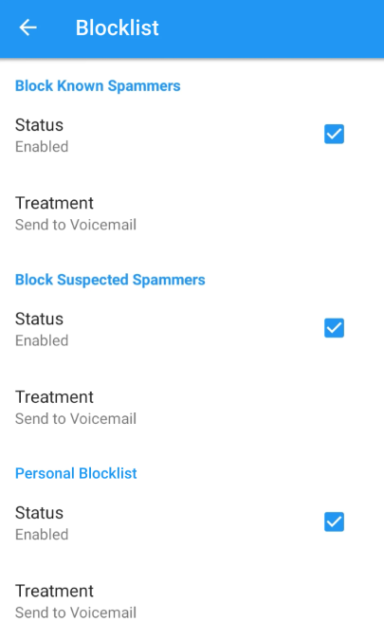
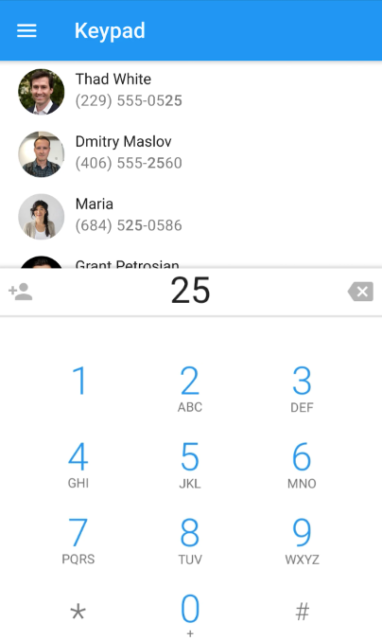

The Ooma interface is simple and easy, albeit a bit outdated.
Images: Ooma
Ooma vs Vonage: Security
Vonage definitely has more robust security offerings, with Ooma scoring the lowest possible score in the category. However, neither Ooma nor Vonage are particularly great when it comes to security.
Vonage offers plenty of compliance certifications, including HIPAA, whereas Ooma doesn’t list anyone. Additionally, Vonage offers TLS/SRTP encryption for its phone system and user permissions across its plans for US, UK, and Australian users. Ooma provides the same level of encryption, but no such luck when it comes to user permissions, password rules, or multi-factor authentication.
Since neither VoIP providers offer particularly robust security features, we’d recommend Google Voice for businesses after advanced safeguards like stringent password rules and multi-factor authentication.
However, Zoom Phone has greatly improved its security practices since the pandemic, and confirmed several improvements to Tech.co via email earlier this year, such as enforceable password rules.
Winner: Vonage
Ooma vs Vonage: Integrations
Rarely are businesses interested in a standalone VoIP solution that can’t connect with any of their other business software. The best option will allow you to connect a wide range of business software, like CRM and team messaging tools, so you can have an all-in-one hub to manage your business communication.
Luckily, both Ooma and Vonage offer a wide range of integrations, although Vonage clearly has the edge, offering 20 free and paid integrations compared to the 10 offered by Ooma. Here’s how the two VoIP providers match up when it comes to integrations:
Vonage integrations:
- Aptivo
- Authvia
- Bullhorn
- Clio
- Connectwise
- Coronet
- Google Workspace
- HubSpot
- JobDiva
- Microsoft Dynamics 365
- NetSuite
- Prodoscore
- Salesforce
- Slack
- Surfly
- Unytalk
- Visuwell
- Zapier
- Zendesk
- Zoho
Ooma integrations:
- AgencyZoom
- Clio
- Freshdesk
- Google Chrome
- HubSpot
- Microsoft Dynamics 365
- Nexhealth
- Salesforce
- Zendesk
- Zoho
When it comes to integrations, less is not more. In fact, more is more, which is why Vonage is the clear winner, offering more integrations to connect with the VoIP solution.
Winner: Vonage
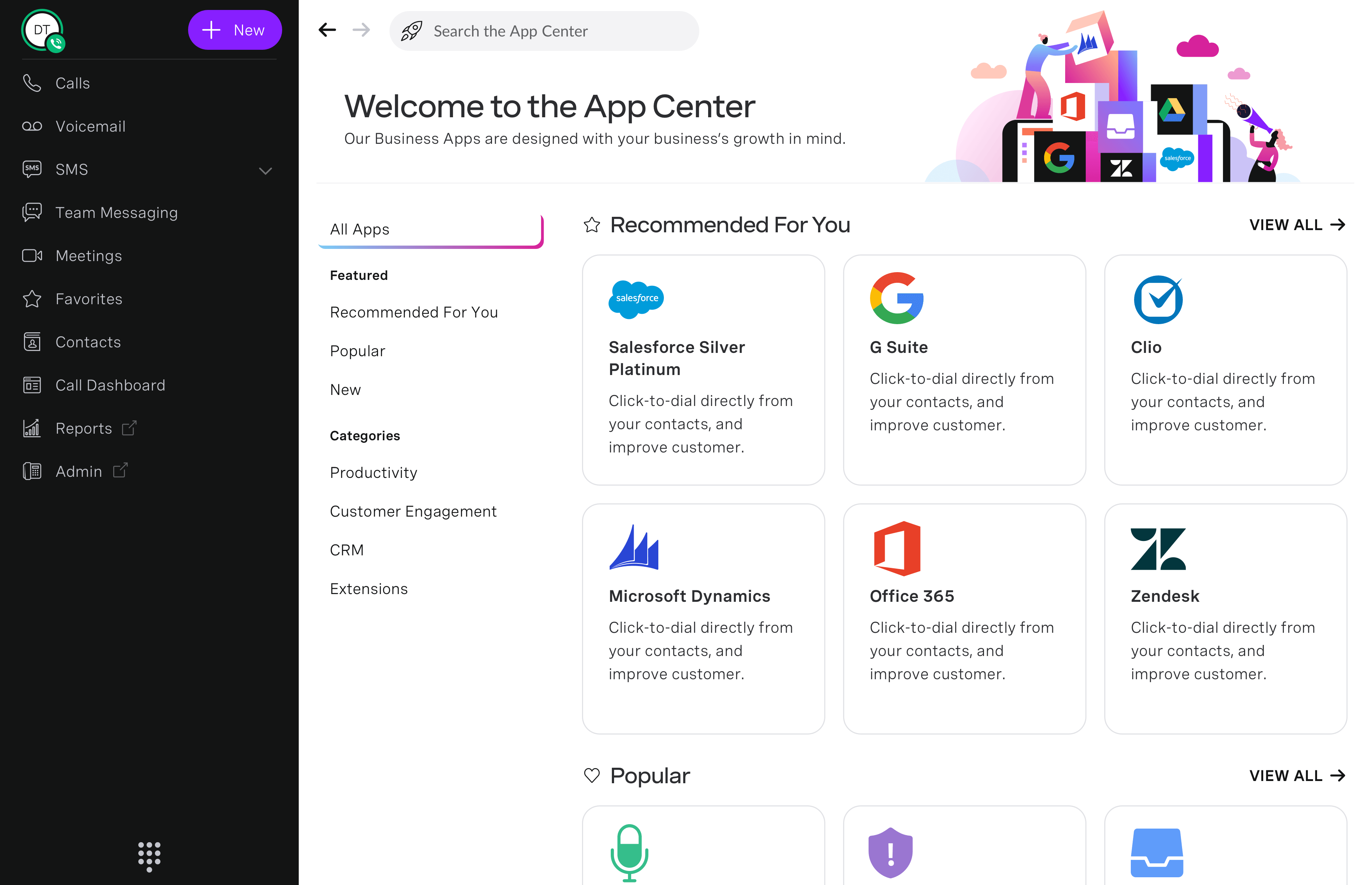
The Vonage app center provides plenty of third-party app integrations.
Image: Vonage
Ooma vs Vonage for International Calling
Both Ooma and Vonage include calls to domestic numbers in the US and Canada in their standard fee, as well as Puerto Rico and Mexico at no added cost. If you do most of your business with these nations, there will be no difference between Ooma and Vonage’s international call rates.
However, if most of your business is further afield, Vonage will probably be the cheaper option as an international phone call app. For example, calls to India are included with Vonage, whereas they will cost you with Ooma.
If you’re interested in comparing international calling rates for a particular country between Ooma and Vonage, it’s important to remember that each country has its own quirks for certain numbers that might cost more or less. Vonage does have an impressive global unified communications solution, too, if you’re an international workforce to be reckoned with.
Winner: Vonage
Alternatives to Ooma and Vonage
Vonage and Ooma are two solid VoIP providers, but they obviously aren’t the only ones out there. In fact, the VoIP industry is filled with great options, and few of them are one-size-fits-all – so another provider might actually be a better fit.
RingCentral is the best overall option and performed very well on our tests, with excellent video conferencing tools and even some nice task management extras for organizing workflows and projects. We also concluded that 8×8 will be the best option for small businesses that need a flexible VoIP solution with the ability to grow with teams using it.
| Price from The typical lowest starting price. The lowest price available for your business will depend on your needs. | Our Rating Relative score out of 5 | Best For | Core Benefit | ||||
|---|---|---|---|---|---|---|---|
| BEST OVERALL | |||||||
| RingCentral | 8×8 | Zoom Phone | Vonage | GoTo Connect | Ooma | Nextiva | Net2Phone |
| Custom | Custom | ||||||
| 4.7 | 4.6 | 4.6 | 4.3 | 4.2 | 4.1 | 4.1 | 4.1 |
| Integrations | Security | Value for money | Training features | Managing large volumes of inbound calls | Overall customer experience | Professional services | Great for international businesses |
| Large variety of Helpdesk and CRM integrations | Integrates with various other communication tools | Affordable pricing | Staff improve on the job | Provides call management features at low cost | No contracts, keep your number, and work from anywhere. | Unlimited Calls in U.S. & Canada | Integrates with Microsoft Office, Google and others |
We take our impartial research and analysis seriously, so you can have complete confidence that we're giving you the clearest, most useful recommendations.
After conducting an initial exploration to identify the most relevant, popular, and established tools in the market, we put them through their paces with hands-on testing to see their real strengths and weaknesses. In this case, we put ten VoIP systems to the test across 78 areas of investigation.
Based on years of market and user needs research, we've established a VoIP system testing methodology that scores each product in seven main categories of investigation and 16 subcategories; this covers everything from the features and security options available to the product's value for money and customer score, as well as much more.
Our main testing categories for VoIP phone systems are:
Customer Score: the external customer opinion as to their satisfaction with the VoIP product; the feedback and ratings given by customers who have used a particular VoIP system, as well as the market poisiton and reputation a VoIP software holds.
Cost: the pricing structure associated with the VoIP service. It includes factors such as monthly subscription fees, call rates (especially for international calls), setup fees, hardware costs (if applicable), and any additional charges for add-on features or services.
Features: the functionalities and capabilities offered by the VoIP service. This can include basic features such as call forwarding, voicemail, call waiting, and caller ID, as well as advanced features like auto-attendant, conference calling, and call recording.
External Connections: the VoIP service's ability to connect and integrate with external systems or devices. This can include compatibility with existing phone systems, integration with mobile devices, and support for softphones or IP phones.
Customer Support: the assistance and resources provided by the VoIP service provider to customers. This can include technical support, documentation, online resources, knowledge bases, and access to customer support representatives.
Security Options: Security options refer to the measures and features implemented by the VoIP service to ensure the confidentiality, integrity, and protection of voice communications and data. This can include encryption of voice calls, compliance, password ruels and user permissions.
Scalability: the ability of the VoIP service to accommodate the growth and changing needs of an organization. This includes factors such as the capacity to handle a growing number of users, support multiple locations or offices, and scale up or down according to the organisation's requirements.
When it comes to calculating a product's final score, not all testing areas are weighted evenly, as we know some aspects matter more to our readers than others, which are merely "nice to have." After hundreds of hours, our process is complete, and the results should ensure you can find the best solution for your needs.
At Tech.co, we have a number of full time in-house researchers, who re-run this testing process regularly, to ensure our results remain reflective of the present day.
| Value How much of a value the service is | External connections How many third-party integrations the service allows | Features How many features the service has | Customer support How available customer support teams are for the service | Security How many security features the service has | Customer Score How users rate the services in app stores and other sources | Scalability How many scalable features the service has | Overall score An aggregate score of all other metrics | ||
|---|---|---|---|---|---|---|---|---|---|
| Ooma | Vonage | ||||||||
| 3.5 | 3.8 | ||||||||
| 2.7 | 3.5 | ||||||||
| 4.1 | 4.4 | ||||||||
| 4.5 | 3.4 | ||||||||
| 1.0 | 3.0 | ||||||||
| 4.4 | 4.0 | ||||||||
| 4.1 | 4.5 | ||||||||
| 4.1 | 4.3 |
Verdict: Which VoIP Provider Is Better?
Our research shows that Vonage is better than Ooma on everything from features and scalability to security and integrations. The more affordable pricing plans make Vonage a better value than Ooma as well, particularly given how much you get for the money.
However, if customer support and satisfaction is your main concern, then Ooma could be a great fit. Ready to hear more? Use our comparison tool to get bespoke quotes for your business, today, so you can decide which VoIP phone system can help you improve your bottom line.
Read more about Cloud Phone Systems on Tech.co
If you click on, sign up to a service through, or make a purchase through the links on our site, or use our quotes tool to receive custom pricing for your business needs, we may earn a referral fee from the supplier(s) of the technology you’re interested in. This helps Tech.co to provide free information and reviews, and carries no additional cost to you. Most importantly, it doesn’t affect our editorial impartiality. Ratings and rankings on Tech.co cannot be bought. Our reviews are based on objective research analysis. Rare exceptions to this will be marked clearly as a ‘sponsored’ table column, or explained by a full advertising disclosure on the page, in place of this one. Click to return to top of page






